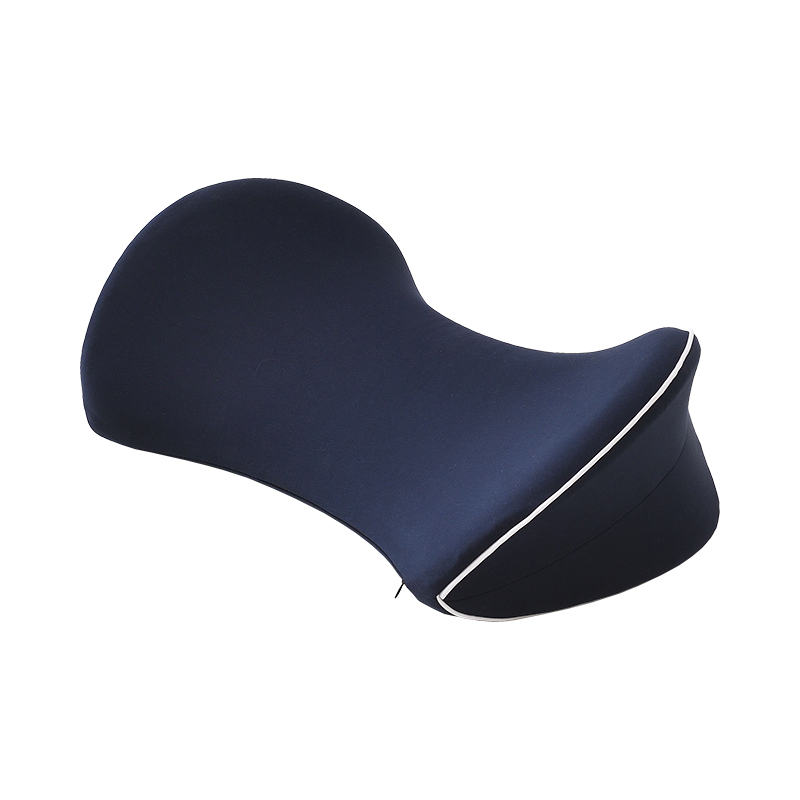To adjust the thickness and hardness of the memory foam back cushions to meet individual needs, it is necessary to comprehensively consider the user's body shape, weight, sitting habits and specific usage scenarios. The following is a detailed analysis and suggestions:
1. Selection and adjustment of thickness
Thickness is an important factor in determining the lumbar support effect of memory foam back cushions. Different thicknesses are suitable for different user needs and usage scenarios.
Factors affecting thickness selection
Body shape and weight:
Thin or light users: usually need thinner memory foam back cushions (such as 3-5 cm), because thicker cushions may make the body sink too much and cause discomfort.
Fat or heavy users: may need thicker cushions (such as 7-10 cm) to provide sufficient support and avoid losing support due to weight pressure.
Sitting habits:
Upright sitting posture: Thinner cushions are more suitable because they can provide slight support while maintaining the natural curve of the spine.
Leaning back sitting posture: Thicker cushions can better fill the gap between the waist and the seat and provide deeper support.
Use scenario:
Office chair: Medium thickness (5-7 cm) is usually the most suitable, which is not too prominent and can effectively relieve waist fatigue caused by long-term sitting.
Car seat: Since car seats usually have a fixed backrest design, thinner cushions (3-5 cm) may be more suitable to avoid adding extra pressure.
Sofa or leisure chair: Thicker cushions (7-10 cm) can make up for the shortcomings of soft sofas and provide better lumbar support.
Recommended thickness range
Lightweight users: 3-5 cm
Medium weight users: 5-7 cm
Heavy weight users: 7-10 cm
2. Selection and adjustment of hardness
Hardness determines the response speed of the memory foam cushion to pressure and the support strength. The choice of hardness needs to balance comfort and support.
Factors affecting the choice of hardness
Weight and body shape:
Thin or light weight users: Softer memory foam should be selected so that it can produce sufficient deformation under less pressure and fit the waist curve.
Fatter or heavy users: Choose a harder memory foam to prevent excessive sinking and maintain good support.
Health conditions:
People with lumbar problems: Softer memory foam can better disperse pressure and reduce direct pressure on the waist.
Users who need strong support: Harder memory foam can provide stronger support to help maintain a correct sitting posture.
Temperature sensitivity:
The hardness of memory foam changes with temperature. For example, in a cold environment, memory foam becomes harder; and in a warm environment, it is softer. Therefore, cushions used in cold areas may need to be slightly harder to ensure their performance in low temperatures.
Recommended hardness level
Low hardness (soft): Suitable for light users or people who need to relieve local pressure.
Medium hardness (moderate): Suitable for most ordinary users, taking into account comfort and support.
High hardness (hard): Suitable for heavy users or scenes that require strong support.
3. Personalized adjustment methods
In order to meet the personalized needs of different users, the thickness and hardness of the memory foam cushion can be adjusted by the following methods:
1. Adjustable design
Removable cushion: Designed as a multi-layer structure, users can add or remove some foam layers as needed to adjust the thickness and hardness.
Airbag auxiliary support: Add inflatable airbags to the memory foam cushion, and change the hardness and support effect by adjusting the air pressure in the airbags.
2. Customized products
Customized thickness and hardness: Tailor the thickness and hardness of the memory foam cushion according to the user's weight, height and usage needs.
Zoning design: Divide the cushion into multiple areas, each with different hardness and thickness to meet the needs of different parts (such as upper back, lower back and waist).
3. Combined with other materials
Mixed materials: Combine memory foam with other materials (such as high-elastic foam or gel layer). For example, the bottom uses harder high-elastic foam to provide basic support, and the top is covered with a layer of soft memory foam to enhance comfort.
Breathable layer: Add breathable mesh or gel coating to the surface of memory foam to improve heat dissipation performance while fine-tuning the hardness.
Through scientific design and flexible adjustment methods, it can ensure that the cushion provides good support while maximizing the user's comfort and health protection.